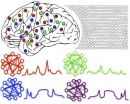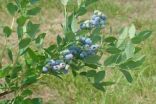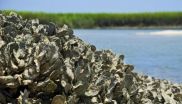(Press-News.org) About one in ten U.S. adolescents uses sunless tanning products, and an intervention promoting these products as an alternative to regular tanning may reduce sunbathing and sunburns among adult women, according to two reports in the September issue of Archives of Dermatology, one of the JAMA/Archives journals.
Ultraviolet radiation exposure was recently upgraded to the highest cancer risk category and is the most common avoidable cause of skin cancer, according to background information in the articles. Sunless tanning products offer an alternative method of achieving tanned skin without exposure to UV rays from the sun or from indoor tanning beds. Most of these lotions and sprays contain dihydroxyacetone, a compound that combines with amino acids in the skin's outer layer to stain the skin a tanned color.
In one article, Vilma E. Cokkinides, Ph.D., of the American Cancer Society, Atlanta, and colleagues assessed the use of sunless tanning products among U.S. adolescents using a nationally representative telephone survey conducted between July and October 2004. A total of 1,600 adolescents age 11 to 18 provided information about whether they used these products in the past year, along with details about demographics, skin type, attitudes and perceptions of sunless tanning and other sun-related behaviors.
Of the teens surveyed, 10.8 percent reported using sunless tanning products in the past year. Those who used them tended to be older and female, to perceive a tanned appearance as desirable, to have a parent or caregiver who also used these products and to hold positive beliefs or attitudes about them. In addition, the use of sunless tanning products was associated with indoor tanning bed use and a higher frequency of sunburn.
"Our findings suggest that in adolescents, use of sunless tanning products appears independently correlated with risky UVR exposure behaviors (indoor tanning and having had sunburns in the previous summer) but not with routine use of sunscreen," the authors write. "Adolescents, therefore, must be educated about these products and the importance of avoiding indoor tanning and practicing sun-protective behaviors."
In another article, Sherry L. Pagoto, Ph.D., of the University of Massachusetts Medical School, Worcester, and colleagues recruited 250 women who were sunbathing at a beach to participate in a cancer prevention intervention study. Of these, 125 were assigned to receive information about skin cancer and sunless tanning. In a tent on the beach, trained research assistants provided the women written and verbal application instructions for sunless tanning products and information about the benefits of sunless tanning as compared with the risks of UV exposure. Participants had a UV-filtered photograph taken, which exposes skin damage not visible to the naked eye, and received free samples of sunscreen and sunless tanning products. The other 125, the control group, received free cosmetic samples not related to skin health and told they would be contacted for follow-up.
After two months, participants who had received the intervention reported sunbathing less frequently, having fewer sunburns, and using more protective clothing than those in the control group. After one year, the intervention group still sunbathed less and also used sunless tanning products more frequently than the control group.
"Encouraging sunbathers to switch to sunless tanning could have an important health impact, but sunless tanning has been considered a cosmetic more so than a health care tool," the authors write. "These findings have implications for public health and clinical efforts to prevent skin cancer. Promoting sunless tanning to sunbathers in the context of a skin cancer prevention public health message may be helpful in reducing sunbathing and sunburns and in promoting the use of protective clothing. Future research should determine how to further convince tanners to switch to sunless tanning."
(Arch Dermatol. 2010;146[9]:987-992, 979-984. Available pre-embargo to the media at www.jamamedia.org.)
Editor's Note: Please see the articles for additional information, including other authors, author contributions and affiliations, financial disclosures, funding and support, etc.
Editorial: Assessing Patients' Tanning Motivations Can Help Guide Interventions
"Tanning for reasons of appearance, such as to look better or healthier, can be immediately satisfied with sunless tanning, but sunless tanning is a single hammer and there are many nails," write June K. Robinson, M.D., of Northwestern University Feinberg School of Medicine, Chicago, and editor of the Archives, and colleagues in an accompanying editorial.
"As physicians proffer sunless tanning as a substitute for intentional UVL-based tanning, it is important for them to know why and how often their patients tan. For example, an event tanner may believe that the expense of spray-on tanning is a good investment for a single event (e.g., the prom) whereas regular seasonal tanners, those who tan year-round, and those who often use tanning to improve their mood and relieve stress may be less likely to cease UVL exposure. Thus, these regular tanners may be more likely to simply add sunless tanning to existing UVL-based tanning habits."
"Because regular tanners appear to tan for reasons of appearance and mood, it is still possible that sunless tanning may help the regular tanner decrease the number of indoor tanning sessions in a month, thus achieving harm reduction when cessation of tanning is not feasible," they write. "Finding suitable stress-relieving and mood-enhancing alternatives to complement sunless tanning and substitute for UVL-based tanning would be important for these habitual tanners."
###
(Arch Dermatol. 2010;146[9]:1029-1030. Available pre-embargo to the media at www.jamamedia.org.)
Editor's Note: Please see the articles for additional information, including other authors, author contributions and affiliations, financial disclosures, funding and support, etc.
Botulinum toxin treatment appears to offer a temporary, short-term solution to relieve drooling in children diagnosed with certain neurological disorders, according to a report in the September issue of Archives of Otolaryngology – Head & Neck Surgery, one of the JAMA/Archives journals.
"Recent estimates suggest a prevalence of [drooling in] nearly 60 percent in children in special care school, of which 33 percent could be classified as severe," the authors write as background in the article. "Depending on the associated neurological disorder, cognitive abilities and ...
Severe injury to the esophagus can occur after a child swallows a disc battery, according to a report in the September issue of Archives of Otolaryngology–Head & Neck Surgery, one of the JAMA/Archives journals.
"A disc battery is an increasingly common foreign body ingested by children," the authors write as background information in the article. The American Association of Poison Control Centers reported a total of 2,063 disc battery ingestions in 1998; the number increased 80 percent during the next eight years. When the battery is lodged in the esophagus, its alkaline ...
Patients who seek a second surgery to revise their rhinoplasty often do so because they are dissatisfied with the symmetry of their nasal tip and because they experience nasal obstructions, according to a report in the September/October issue of Archives of Facial Plastic Surgery, one of the JAMA/Archives journals. Surgeons who examine revision rhinoplasty candidates cite slightly different findings than patients, suggesting that communication about nasal aesthetics could be improved.
Approximately 5 percent to 15 percent of patients who have rhinoplasty [plastic surgery ...
Analysis of seagull droppings has revealed that one in ten carry 'superbug' bacteria, resistant to the last-resort antibiotic Vancomycin. Researchers writing in BioMed central's open access journal Proteome Science investigated 57 migratory seagull samples recovered from an island off the coast of Portugal.
Gilberto Igrejas from the University of Trás-os-Montes and Alto Douro, Portugal, worked with a team of researchers to carry out the study. He said, "We used a novel technique called proteomics to detect the maximum number of bacterial proteins which are thought to ...
Berkeley — When it comes to conducting complex tasks, it turns out that the brain needs rhythm, according to researchers at the University of California, Berkeley.
Specifically, cortical rhythms, or oscillations, can effectively rally groups of neurons in widely dispersed regions of the brain to engage in coordinated activity, much like a conductor will summon up various sections of an orchestra in a symphony.
Even the simple act of catching a ball necessitates an impressive coordination of multiple groups of neurons to perceive the object, judge its speed and trajectory, ...
SPRINGFIELD, MO—The American elderberry is showing promise as a profitable commercial fruit crop. Traditionally used for making jelly, juice, and wine, elderberry is becoming increasing important in North America's burgeoning "nutraceutical" industry. Historically, elderberries have mostly been harvested from the wild; researchers have made recently made efforts to select or develop improved cultivars. Increased interest and emerging markets are encouraging scientists to develop improved elderberry cultivars that yield consistent, superior production. Scientists from the ...
GRIFFIN, GA—Blueberry aficionados will soon have a tasty, colorful new variety for their backyard gardens. Blueberry experts D. Scott NeSmith and Mark K. Ehlenfeldt introduced 'Blue Suede™' in a recent issue of HortScience. The new southern highbush blueberry (Vaccinium hybrid) was released by the University of Georgia's College of Agricultural and Environmental Sciences, the University of Georgia Agricultural Experiment Station, and the U.S. Department of Agriculture–Agricultural Research Service. 'Blue Suede™' is targeted for sales to the home gardener market.
According ...
WEST LAFAYETTE, Ind. - A Purdue University-led research team has uncovered the chemical components of the adhesive produced by oysters, providing information that could be useful for fisheries, boating and medicine.
A better understanding of oysters' ability to stick together to form complex reefs would help those trying to boost the dwindling oyster population, aid in the creation of materials to keep boat hulls clean without harming the environment, and bring researchers one step closer to creating wet-setting adhesives for use in medicine and construction.
Jonathan ...
EAST LANSING, MI—When consumers visit garden centers in spring they will most likely buy flowering ornamental plants that are ready for their home gardens. Studies have shown that consumers favor plants that are already in flower rather than those that are "vegetative"—a preference that can present multiple challenges for commercial growers.
To satisfy consumers' wishes, producers of ready-to-flower ornamentals like bedding plants and perennials start growing crops far in advance of the spring buying season, often during the dark and short days of winter. When the days ...
Dust has been blowing into the Eastern Atlantic Ocean from Africa's Saharan Desert, and a NASA satellite captured some of that dust east of Tropical Storm Julia.
NASA's Moderate Resolution Imaging Spectroradiometer (MODIS) instrument on the Terra satellite captured a visible image of Tropical Storm Julia on Sept. 18 at 13:50 UTC (9:50 a.m. EDT) and noticed a large area of Saharan dust over the Atlantic Ocean, to Julia's east.
On Sept. 20 at 5 a.m. EDT, Julia was still holding on to tropical storm status with maximum sustained winds near 45 mph. Julia was located about ...




